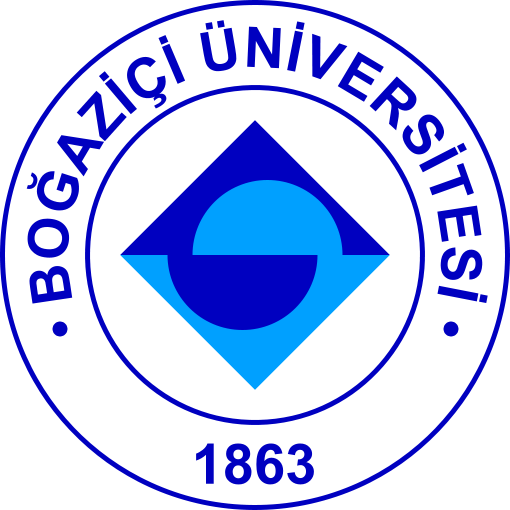| |
|
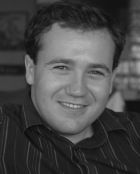
Prof.Utkan Demirci |
Dr. Demirci is currently an associate professor at Stanford University School of Medicine, Canary Center Early Cancer Detection. Prior to his Stanford appointment, he was an Associate Professor of Medicine at Brigham and Women's Hospital, Harvard Medical School and at Harvard-MIT Division of Health Sciences and Technology serving at the Division of Biomedical Engineering, Division of Infectious Diseases and Renal Division. He leads a group of 20+ researchers focusing on micro- and nano-scale technologies. He received his B.S. degree in Electrical Engineering in 1999 as a James B. Angell Scholar (summa cum laude) from University of Michigan, Ann Arbor. He received his M.S. degree in 2001 in Electrical Engineering, M.S. degree in Management Science and Engineering in 2005 and Ph.D. in Electrical Engineering in 2005, all from Stanford University.
The Demirci Bio-Acoustic MEMS in Medicine Labs (BAMM) laboratory specializes in applying micro- and nanoscale technologies to problems in medicine at the interface between micro/nanoscale engineering and medicine. We apply innovative technologies to clinical problems. Our major research theme focuses on creating new microfluidic technology platforms targeting broad applications in medicine. In this interdisciplinary space at the convergence of engineering, biology and materials science, our goal is to create novel technologies for disposable point-of-care (POC) diagnostics and monitoring of infectious diseases, cancer and controlling cellular microenvironment in nanoliter droplets for biopreservation and microscale tissue engineering applications. These applications are unified around our expertise to test the limits of cell manipulation by establishing microfluidic platforms to provide solutions to real world problems at the clinic.
Dr. Demirci creates technologies to manipulate cells in nanoliter volumes to enable solutions for real world problems in medicine including applications in infectious disease diagnostics and monitoring for global health, cancer early detection, cell encapsulation in nanoliter droplets for cryobiology, and bottom-up tissue engineering. His research interests involve applications of microfluidics and acoustics in medicine, especially: microfluidics for inexpensive, disposable CD4 counts and viral load for HIV in resource-constrained settings for global health problems; 3-D bioprinting and tissue models including 3-D cancer and neural cultures. Dr. Demirci has published over 80 peer reviewed publications in journals including PNAS, Nature Materials, Nature Communications, Advanced Materials, Small, Trends in Biotechnology, Chemical Society Reviews and Lab-chip, over 150 conference abstracts and proceedings, 10+ book chapters, and an edited book. His work was highlighted in Wired Magazine, Nature Photonics, Nature Medicine, MIT Technology Review, Reuters Health News, Science Daily, AIP News, BioTechniques, and Biophotonics. His scientific work has been recognized by numerous national and international awards including the NSF Faculty Early Career Development (CAREER) Award (2012), and the IEEE-EMBS Early Career Achievement Award (2012). He was selected as one of the world’s top 35 young innovators under the age of 35 (TR-35) by the MIT Technology Review. In 2004, he led a team that won the Stanford University Entrepreneur’s Challenge Competition and Global Start-up Competition in Singapore. His work has been translated to start-up companies including DxNow Inc. and KOEK Biotechnology.
|
| |
|
| |
|
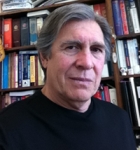
Prof. Roberto Guzmán |
Prof. Roberto Guzmán is a Professor in Chemical and Environmental Engineering at the University of Arizona. Here, he has initiated a new NanoBiotechnology and Nanomedicine Laboratory dedicated to the development of nano/biomolecular polymeric structures with encapsulated anticancer drugs and gold nanoshells for dual cancer therapy that combines controlled and targeted drug delivery and infrared thermal ablation. He is also working extensively in developing nano/biomolecular multifunctional para-magnetic metal-hybrid nanoparticles for diagnostics and target NIR therapy. His work and contributions in controlled and targeted drug delivery involves both experimental and theoretical work analysis.
Research in his laboratory at the University of Arizona has focused for several years in developing novel biomolecular separation techniques together with Professor Jerker Porath from the University of Uppsala in Sweden. This work in protein separations has been applied in the development of novel specific adsorbents for low molecular weight biomarkers isolation and identification. This technology could be used potentially for a wide number of cancer biomarkers and in principle, for any other disease that produces extraneous small molecular weight biomolecules.
Professor Guzmán, received a PhD in Chemical Engineering with emphasis in Biotechnology from North Carolina State University, a MS degree in Chemical Engineering from the University of Illinois in Chicago and a BS degree also in Chemical Engineering from the University of Guanajuato , Mexico. He has been a visiting professor at the University of Guanajuato, Mexico and a visiting scholar at the University of Uppsala, Sweden and at the University of Technology in Compiegne, France.
His laboratory at the University of Arizona has accumulated extensive expertise in the synthesis of polymers and gold surface derivatives and their functionalization with affinity ligands to carry out effective nanostructure synthesis, preparation and characterization. His laboratory has developed in the last few years a comprehensive expertise in ligand and biomolecule modification of different surfaces including different types of polysaccharides, silicon oxide, polymeric organic and inorganic structures and metal surfaces.
|
| |
|
 Prof. Karsten Haupt
|
Prof. Karsten Haupt studied Biochemistry at the University of Leipzig, Germany, where he received an MSc Degree in 1991. In 1994 he obtained his PhD in Bioengineering from Compiègne University of Technology, France. He then spent three years as a research fellow at Lund University, Sweden, where he worked on molecular imprinting with Klaus Mosbach. Back in France he has been a researcher at INSERM, Paris, before joining the University of Paris 12 as an associate professor in 1999. In 2003 he was appointed full professor of Nanobiotechnology at Compiègne University of Technology (UTC), France, where he is the Head of the Institute for Enzyme and Cell Engineering. He is also one of the founders and scientific advisor of the French company PolyIntell that commercializes molecularly imprinted polymer-based products for biomedical, food and environmental analysis. His present research interests include affinity technology, chemical and biosensors, molecularly imprinted polymers and synthetic receptors, biomimetic polymers and nanostructured materials for biomedical applications, including drug delivery, medical treatment and diagnostics. |
| |
|
| |
|
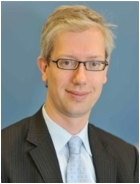
Prof. Henry Hess |
Prof. Henry Hess is currently an Associate Professor in the Department of Biomedical Engineering at Columbia University. His research interests include nanobiotechnology, biomaterials science, and synthetic biology. A particular focus of his work is the engineering of hybrid nanodevices which integrate biological and synthetic components.
Dr. Hess received a diploma in physics from the Technical University Berlin in 1996, and obtained his Dr rer. nat. (summa cum laude) in experimental physics from the Free University of Berlin in 1999 under the guidance of Ludger Woeste. His postdoctoral studies were conducted from 2000 to 2002 at the Department of Bioengineering, University of Washington, where he also served as a Research Assistant Professor (2002–2005). From 2005 to 2009 he served as an Assistant Professor at the Department of Materials Science and Engineering of the University of Florida. He received the Wolfgang Paul Award of the German Society for Mass Spectrometry (2000), the Feodor Lynen postdoctoral fellowship of the Alexander-von-Humboldt foundation (2000), the Philip Morris Forschungspreis (2005, together with his postdoctoral mentor Viola Vogel), the Distinguished Mentor Award of the UF/HHMI “Science for Life” program (2007), an invitation to the National Academies Keck Futures Initiative “Synthetic Biology” (2009), and was an invited speaker at the US Frontiers of Engineering Meeting 2010.
|
| |
|
| |
|
 Prof. Andrew Schwartz
|
Prof. Andrew Schwartz is a Professor of Neurobiology at the University of Pittsburgh. Dr. Schwartz received his Ph.D. from the University of Minnesota in 1984 with a thesis entitled “Activity in the Deep Cerebellar Nuclei During Normal and Perturbed Locomotion.” He then went on to a postdoctoral fellowship at the Johns Hopkins School of Medicine where he worked with Dr. Apostolos Georgopoulos, who was developing the concept of directional tuning and population-based movement representation in the motor cortex While there, Schwartz was instrumental in developing the basis for three-dimensional trajectory representation in the motor cortex.
In 1988, Dr. Schwartz began his independent research career at the Barrow Neurological Institute in Phoenix. There, he developed a paradigm to explore the continuous cortical signals generated throughout volitional arm movements. This was done by using monkeys trained to draw shapes while recording single-cell activity from their motor cortices. After developing the ability to capture a high fidelity representation of movement intention from the motor cortex, Schwartz teamed up with engineering colleagues at Arizona State University to develop cortical neural prosthetics. The work has progressed to the point that monkeys can now use these recorded signals to control motorized arm prostheses to reach out grasp a piece of food and return it to the mouth.
Schwartz moved from the Barrow Neurological Institute to the Neurosciences Institute in San Diego in 1995 and then to the University of Pittsburgh in 2002. In addition to the prosthetics work, he has continued to utilize the neural trajectory representation to better understand the transformation from intended to actual movement using motor illusions in a virtual reality environment.
|
| |
|
| |
|
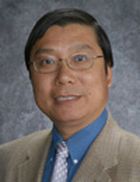 Prof. Kaiming Ye
|
Dr. Kaiming Ye is a Professor and Department Chair, Department of Bioengineering, Watson School of Engineering and Applied Science, Binghamton University, SUNY. Before he joined BU, he was Program Director at Biomedical Engineering Program, National Science Foundation (NSF), managing biomedical engineering and health science funding program.
His research interest focuses on stem cell and regenerative medicine and 3D tissue and organ printing. He has published one book, one patent, and more than 66 papers in the field. He is best known for his creative works on developing 3D scaffolds for directing stem cell pancreatic differentiation, creating fluorescence nanosensors for both in vivo and in vitro continuous glucose monitoring, and formulating recombinant yeast influenza vaccines. His research has been continuously funded by NIH, NSF, JDRF, ABI and industries. He serves as executive/associate editor and editorial board member of 12 journals and has been invited to deliver keynote/plenary speeches at numerous international and national conferences. He has also served on numerous review panels and study sections for NIH and NSF. He is also Program Evaluator of ABET accreditation for Biomedical Engineering Program. |
| |
|
| |
|






